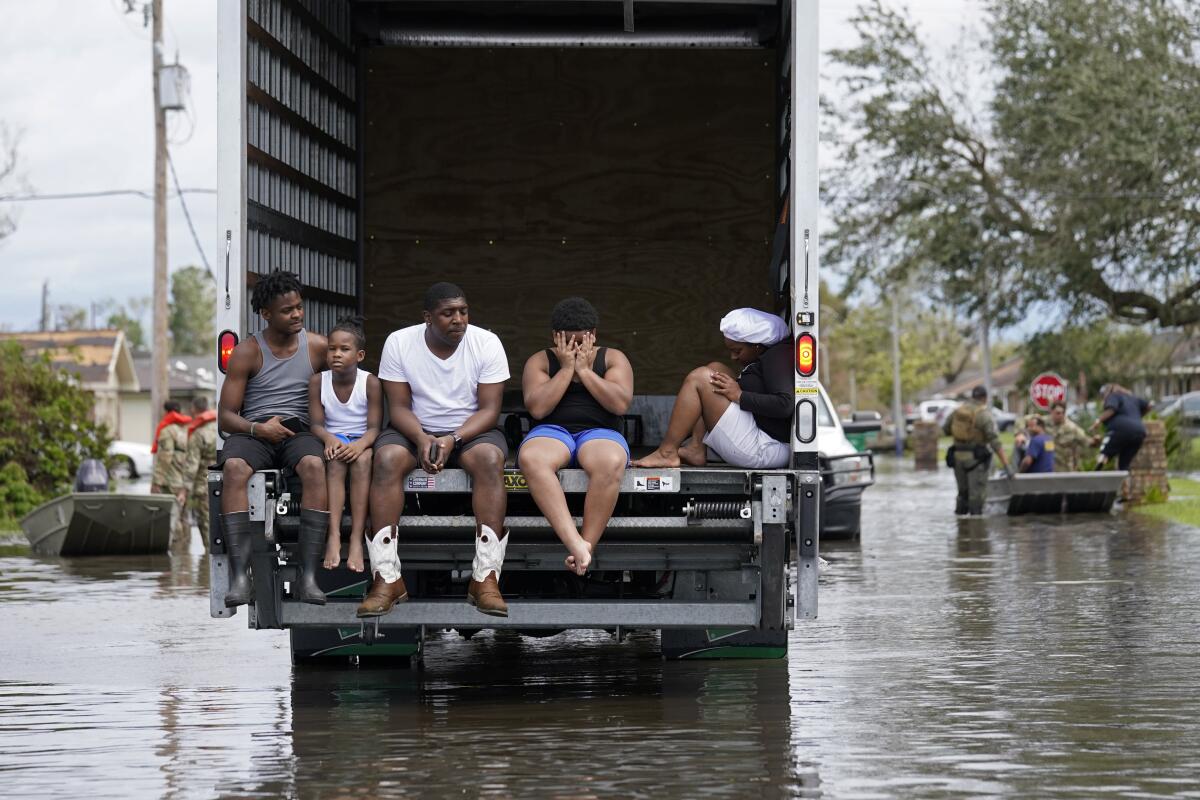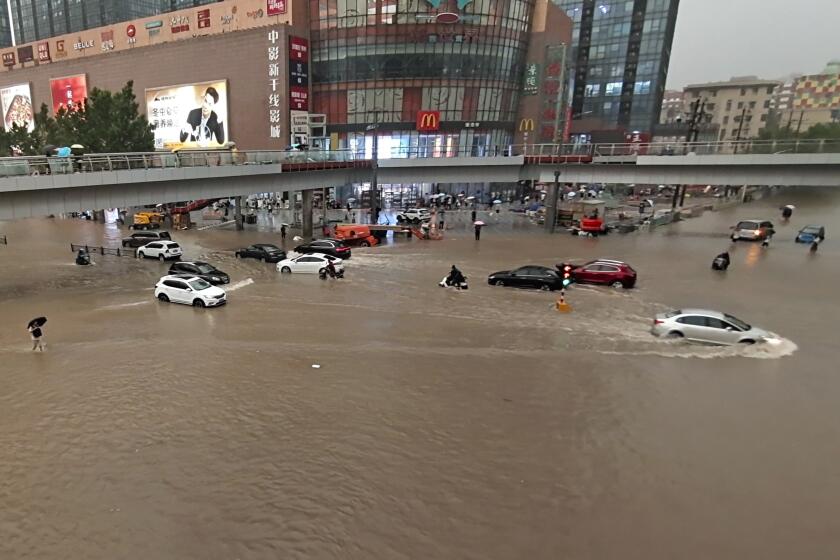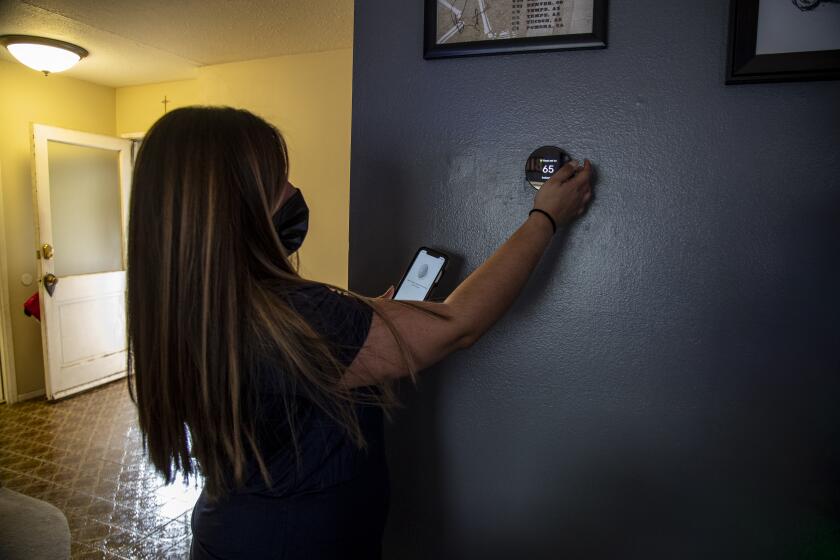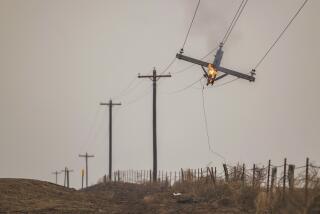Weather disasters are now far more frequent and costly but less deadly, U.N. says

- Share via
GENEVA — Weather disasters are striking the world four to five times more often and causing seven times more damage than in the 1970s, the United Nations weather agency reports.
But these disasters are killing far fewer people. In the 1970s and 1980s, they killed an average of about 170 people a day worldwide. In the 2010s, that dropped to about 40 per day, the World Meteorological Organization said in a report Wednesday that looks at more than 11,000 weather disasters in the past half-century.
The report comes during a disaster-filled summer globally, with the United States simultaneously struck by powerful Hurricane Ida and an onslaught of drought-worsened wildfires.
In the 1970s, the world averaged about 711 weather disasters a year, but from 2000 to 2009 that was up to 3,536 a year or nearly 10 a day, according to the report, which used data from the Center for Research on the Epidemiology of Disasters in Belgium. The average number of yearly disasters dropped a bit in the 2010s, to 3,165, the report said.
Climate change is making the world more prone to floods like those in China and Europe and to heat waves and fires like those in the U.S. and Russia.
Most death and damage during 50 years of weather disasters came from storms, flooding and drought.
More than 90% of the more than 2 million deaths are in what the U.N. considers developing nations, while nearly 60% of the economic damage occurred in richer countries.
For the record:
3:38 a.m. Sept. 1, 2021A previous version of this story misstated the cost of weather disasters. They cost $175 billion a year in the 1970s and $1.38 trillion a year in the 2010s and not $175 million and $1.38 billion, respectively.
In the 1970s, weather disasters cost about $175 billion a year globally when adjusted to 2019 dollars, the U.N. found. That increased to $1.38 trillion a year in the 2010s.
What’s driving the destruction is the increasing concentration of people in dangerous areas just as climate change is making weather disasters stronger and more frequent, U.N. disaster and weather officials said. But better weather warnings and preparedness are lessening the death toll.
“The good news is we’re learning how to live with risk and protect ourselves,” said Susan Cutter, director of the Hazards and Vulnerability Research Institute at the University of South Carolina, who wasn’t part of the report.
Susan Cutter, director of the Hazards and Vulnerability Research Institute at the University of South Carolina, noted progress in learning to live with risk and protecting ourselves.
The dire report from the IPCC doesn’t mean you should give up on reversing climate change. Here’s how you can still make a difference.
“On the other hand, we’re still making stupid decisions about where we’re putting our infrastructure,” she said. “But it’s OK. We’re not losing lives; we’re just losing stuff.”
Samantha Montano, an emergency management professor at the Massachusetts Maritime Academy and author of the book “Disasterology,” said she worries that death tolls may stop decreasing because of the increase in extreme weather from climate change especially hitting poorer nations.
“The disparity in which countries have had the resources to dedicate to minimizing disaster deaths is of huge concern,” she said. “Deaths decreasing in recent decades does not mean that they will continue to do so unless we continue to invest in these efforts.”
Hurricane Ida is a good example of heavy damage but what will probably be less loss of life than past major hurricanes, Cutter said. This year, she added, weather disasters “seem to be coming every couple weeks,” with Ida, U.S. wildfires and deadly floods in Germany, China and Tennessee.
Toward a more sustainable California
Get Boiling Point, our newsletter exploring climate change, energy and the environment, and become part of the conversation — and the solution.
You may occasionally receive promotional content from the Los Angeles Times.
“The number of weather, climate and water extremes are increasing and will become more frequent and severe in many parts of the world as a result of climate change,” said World Meteorological Organization Secretary-General Petteri Taalas.
The five most expensive weather disasters since 1970 were all storms in the United States, led by 2005’s Hurricane Katrina. The five deadliest weather disasters were in Africa and Asia — led by the Ethiopian drought and famine of the mid-1980s and Cyclone Bhola in Bangladesh in 1970.
More to Read
Sign up for Essential California
The most important California stories and recommendations in your inbox every morning.
You may occasionally receive promotional content from the Los Angeles Times.












